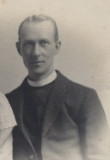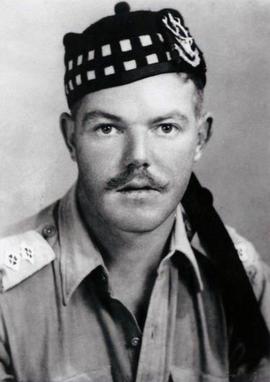Baker-Cresswell, Gilfrid Edward, son of Henry Gilfrid Baker-Cresswell AMICE, GPO engineer, and Vera Mabel, d. of Edward Foote Ward of Salhouse Hall, Norfolk, and niece of Gerald Charles Fanshawe (qv); b. 15 July 1914; adm. Sept. 1927 (R); left Apr. 1932; Trin. Coll. Camb., matric. 1932, BA 1935; RMA Woolwich 1935-7; RE 1937-42 (Maj.); m. 27 Sept. 1938 Anne Sylvia, d. of Sir John Charrington, coal merchant, of Crockham Hill, Kent; killed in action (Middle East) Oct. 1942; despatches (posthumous) June 1943.
Gilfrid Edward Baker-Cresswell was born at Edinburgh on the 15th of July 1914 the elder son of Henry Gilfred Baker-Cresswell AMICE, an engineer for the General Post Office, and Vera Mabel (nee Ward) Baker-Cresswell of Salthouse Hall, Norfolk, later of The Post House, Ellingham, Chathill in Northumberland. He was educated at Westminster School where he was up Rigaud’s from September 1927 to April 1932 He won a O.W.W. Masonic Lodge Prize for Science (practical) in 1930. He was a member of the Officer Training Corps and was promoted to Lance Corporal in September 1930. He won the Long Distance Race at Putney in 1931 and the Long Distance Race on the 8th of March 1932 and won a number of other cups for running during his time at the school.
On leaving school he attended the Royal Military Academy, Woolwich from where he was commissioned as a 2nd Lieutenant in the Royal Engineers on the 30th of August 1934. He was admitted as a pensioner at Trinity College, Cambridge on the 1st of October 1934 where he read engineering and graduated with a BA in 1936. He was promoted to Lieutenant on the 30th of August 1937 and to Captain on the 30th of August 1942.
He was married on the 27th of September 1938 to Anne Sylvia (nee Charrington) of Broad Oak End, Hertford. They had two children, Sally and Gilfred John, born on the 12th of December 1939. Shortly after he was married he was posted to Mauritius for garrison duty.
He was Mentioned in Despatches: - “In recognition of distinguished services in the Middle East during the period 1st May 1942 to 22nd October 1942”, which was announced by the War Office on the 24th of June 1943.
He is commemorated on a stone plaque in St Maurice’s Church, Ellingham and on the war memorial at Ellingham. He is also commemorated on the memorial at Trinity College, Cambridge.
He is buried at El Alamein War Cemetery Plot XI, Row E, Grave 1.

